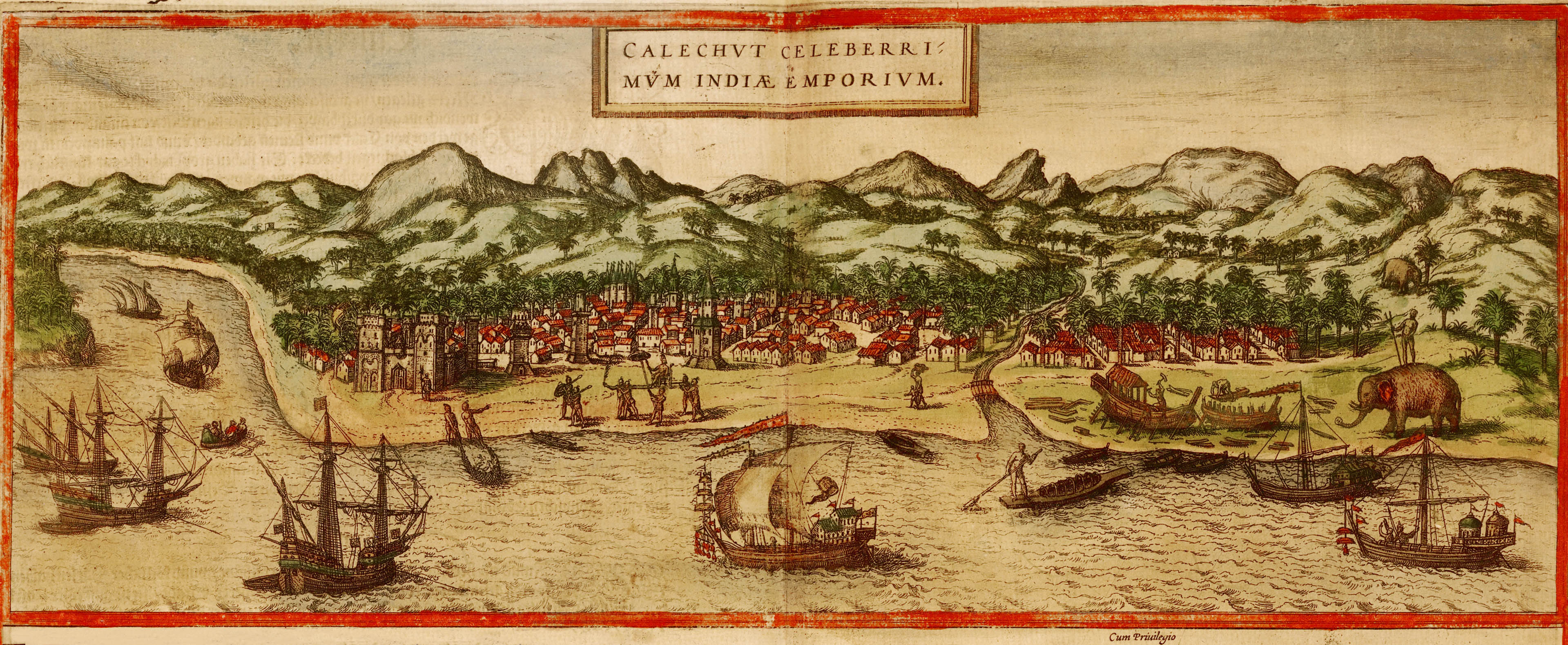
The birth of the City of Calicut is associated with a religious conversion. Legend has it that the last Cheraman Perumal (the ruler of Kerala) partitioned his kigdom among his dependents who were probably already feudatories. He then did the unthinkable - followed some Arab traders to the Holy Land of Mecca, embraced Islam and spent the last years of his life in obscurity.
One of the descendants – who was apparently the favourite of the Perumal – was the Governor of Ernad and he had already distinguished himself by leading the Chera army to victory. This warrior-hero, named Mana Vikrama, was gifted the land and sea coast lying to the north west of his territory. He later annexed the kingdom of Porlathiri to the south of the Kallai River and established his rule over the area covered by the present Calicut city.
Historians dispute the date of conversion (A.D.856) although the fact of conversion could be true. Modern scholarship tends to put the date of the last Perumal, Rama Kulashekhara at 1089-c 1102 A.D. They also agree that the legend of Malik Dinar may be historical, but the dates may have to be advanced. Thus, it is now accepted that the last Perumal might have abdicated, embraced Islam and proceeded on a pilgrimage to Mecca around the 12th Century.
Why did he convert to Islam? The tradition that the Perumal who was converted was a contemporary of Prophet Mohammed, explains that the conversion came about after the Perumal saw some signs (including the parting of the moon) and was convinced about the greatness of the Prophet. Some stories even mention that the two had met. As we noted above, the evidence seems to suggest that the date of conversion was much later, sometime in the 12th Century.
Strangely, I have not come across any new explanation being offered by historians for the conversion, even though they are more or less convinced that the conversion took place much later than what has been suggested in the tradition.
It would appear that the pro-Muslim tradition of the last Perumal was continued by the first generations of Zamorins – the grant by a Zamorin of land for building the Muccunti Mosque, the appointment of a Muslim as the chief of Calicut Port (Shah Bunder) and the honour given to Muslim traders. Ibn Batuta (1342-47 A.D.) noted that Muslim merchants had their houses in all districts and were greatly respected. These indicate that it was the state policy to win the confidence of the Arab and Muslim traders who were the instruments for bringing prosperity to the shores of Calicut. If so, was the conversion by the Perumal also part of trade promotion? Did he seek to instil confidence in the Muslim traders that the new port city of Calicut would welcome them cordially and treat them on preferential terms? Trade was virtually in the hands of the Muslims during those days, as the Romans, Venetians and Genoese had departed. Calicut, after all, had to compete with Kodungalloor which was a congenial destination for the Muslim traders and had even hosted the first Mosque in Asia.
It is tempting to propose that Perumal's conversion was meant to increase the volume of trade coming to Calicut and was part of deliberate state policy. Particularly, as we seem to have a parallel in the history of Malacca. Parameswara, a young Prince from Palembang (Java) had to flee to the island of Temasek driven by the Javan overlords in the late 12th century. He established a small colony of orang laut (boat people) on this island which he named Singhapura ( the present Singapore). He was not allowed to live in peace in Singapore by his powerful neighbour – the Ayuthia Kingdom of Thailand. He fled once again, this time to Bertam, on the tip of the Malayan archipelago and set up a habitation in a fishing village which he named Malacca in 1396. The place slowly grew into a busy entreport, visited by the Arab and Muslim traders. Like Calicut, Malacca was also on the monsoon route to China and became a key link in the trade in spices.
Parameswara, a Hindu from the Srivijaya dynasty, decided to embrace Islam in 1400, supposedly under the influence of Tamil Muslim traders (Rowthers and Marakkars), as he found that the majority of the residents and visitors of the by now busy port was Muslim. The Tamil traders then arranged a marriage alliance for him with a Muslim Princess of Pasai ( near Aceh) and Parameswara also took on a new name – Iskander Shah. Under the patronage of Chinese, Tamil and Gujarati merchants, Malacca prospered as a famous port where more than 80 languages were being spoken.
Much of this glory is attributed to the clever move on the part of Parameswara to embrace the 'religion of foreign trade', as much as to the protection that was offered by the Ming dynasty whose most visible symbol was the frequently visiting Zheng He. Interestingly, the chief of port operations of Malacca was also a Muslim and his designation was Shah Bunder, as in Calicut.
Perhaps, there is a parallel between Perumal's conversion and Parameswara's conversion. Trade took precedence over religion, as demonstrated by the Zamorin who had no hesitation in allowing the entry of Vasco da Gama into the Durga Shrines at Putthoor and Varakkal, without even bothering to clarify that the idol that he was worshipping was not that of Mother Mary. Zamorin's instruction that every fisherman family should provide one male for conversion to Islam in order to ensure supply of maritime manpower is another instance of expediency above faith.
The conversions could also have been part of a global wave of spread of Islam in the backdrop of the on-going Crusades. The same Tamil Muslim trader community who are supposed to have converted Parameswara in Malacca might have influenced the Zamorin, as part of an Islamisation wave.
Enough questions for research??













.jpg)

